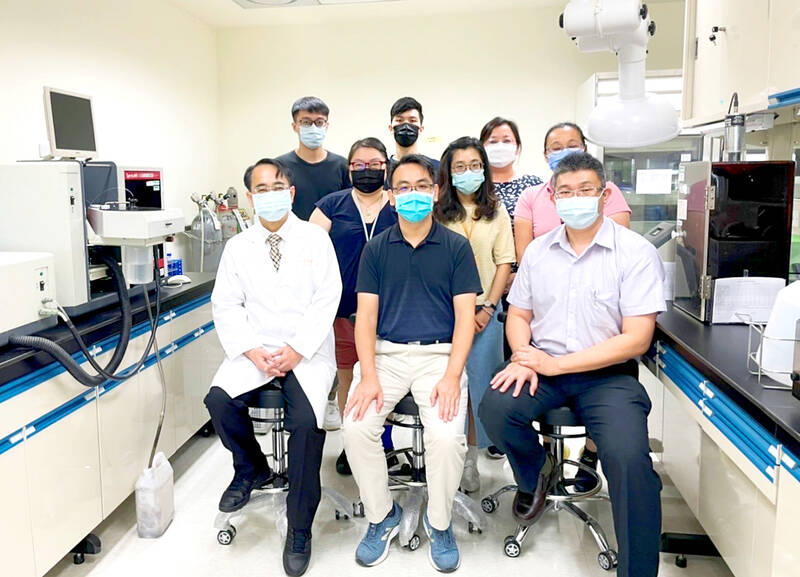Our Terms & Conditions | Our Privacy Policy
Scientists develop faster lead poisoning sensor
-
By Lin Hui-chin and Jonathan Chin / Staff reporter, with staff writer
Taiwanese scientists have invented a nanocomposite membrane-based sensor that can test for lead poisoning with a drop of blood in less than 10 minutes, achieving a major medical technology breakthrough.
The program to develop a faster, cheaper and easier-to-operate sensing device for lead poisoning is a collaboration between Chang Gung University, Linkou Chang Gung Memorial Hospital, and the National Taipei University of Science and Technology, the research team said in a statement yesterday.
Conventional tests for lead poisoning are highly accurate, but conducted only at specialist laboratories far removed from hospitals, with a delay that could prove dangerous to the patient, the statement said.

Photo courtesy of Linkou Chang Gung Memorial Hospital
When nanorods collide with ionized lead, surface tension causes the membrane to deform and change the electric resistance in the semiconductor, enabling the device to detect lead, hospital nephrologist Yen Tzung-hai (顏宗海) said.
The sensor’s detection limit is 0.12 parts per billion of lead, or seven times that of nanorods alone, he said.
The research team’s novel single-use test kits offer a highly sensitive, portable and low-cost capability that could be deployed at the point of care, while cutting down risks of contamination to the sample in transport, he said.
Taiwan banned the use of leaded gasoline in 2000, but clinical cases of lead poisoning persists due to exposure to the element in industrial settings, lead pipes, paints, ceramics, toys or consumption of medicinal herbs, he said.
Lead poisoning is difficult to diagnose because the metal can inflict harm on every organ and cause symptoms that include anemia, abdominal pain, cardiovascular disease, renal damage and infertility, Yen said.
The international standard for lead poisoning in adults is a blood lead concentration higher than 10 parts per billion and 3.5 parts per billion in minors, he said, adding that atomic absorption or plasma mass spectroscopy have been the only practical methods for detecting poisoning.
The team’s invention would increase health outcomes for patients and greatly improve medical efficiency, he said.
[ad_1]
Images are for reference only.Images and contents gathered automatic from google or 3rd party sources.All rights on the images and contents are with their legal original owners.
[ad_2]



Comments are closed.